What Is A Floating Frame? Complete Details

Due to the elegant, graceful, and sophisticated manner in, which they show artwork, photos, and other decorative things, floating picture frames have grown in popularity over the past several years.
The presentation of artwork is improved and elevated by using this style, which is used by experts all around the world. This design is beautiful and reasonably priced; you can find them anywhere, including living rooms, museums, and great exhibitions.
In this article, we’ll define a floating picture frame, go through its components, design and explain why it’s the best option for your next art exhibition.
What Is A Floating Frame?
To define floating of artwork inside a frame is the whole concept and illusion of suspending art pieces in the frame without actually touching it. This adds an intriguing aesthetic element and a sense of three-dimensional depth to the entire display.
Prints and paintings on canvas are given a special sense of depth and mystery by canvas floating frames. A dimensional illusion with strong visual impact is added by the canvas’ appearance as though it were suspended within the frame and without contacting any of the sides.
Traditional v. Floater Frame
Traditional frames contain a lip that retains the artwork, glass, matting, and backing. The artwork is attached through the backside of the frame. This lip is known officially as the rabbet. In contrast to the more streamlined and streamlined floater canvas frames, traditional frames typically overlay the image and have a more distinct and visible appearance.
A canvas floating frame is similar to an open box; the art is put into the open area at the front. The main benefit of floater frames is that the artwork cannot be concealed or covered in any way, making the complete picture visible. This enables visitors to glimpse the frequently concealed canvas sides that are typically masked by a regular picture frame.
Construction & Design of Floater Frame
Material & Style Options
The floating frame for canvas is available in a variety of colours and finishes to match the decor of your project. Like traditional picture frames, floater frames can be built of metal or wood, offering a wide range of design possibilities to frame a canvas. You may be sure to discover a frame that complements the beauty of your work, whether it’s made of natural wood, eco-friendly wood, or contemporary metal.
How Artwork Is Mounted Within The Frame?
It is quite easy to frame a canvas into a floater frame. Making your artwork appear to be magically floating over an uncut blank mat board is the whole objective of float mounting.
You should cut your mat board to the exact dimensions of your backing board to guarantee a flawless fit. T-hinges may be used to affix your artwork straight to the mat board. Or, to make a float mount frame’s shadow more striking, first mount the art print on an acid-free foam core to raise the piece of artwork a little higher in the frame.
On top of a spotless surface, the canvas is laid face down. Inspect that the glass of the frame is not being pressed against the elevated artwork. The floater frame is then positioned on top of the canvas, facing down. The top and bottom centres of the canvas and frame are where offset clips are positioned.
Floating Picture Frame Design Elements (Depth & Width)
The gap between the top of the canvas floating frame and the artwork is known as the float depth. A canvas in a floater is traditionally positioned 1/16″ to 1/8″ below the face of the frame, with a 1/8″ float gap between the artwork and the side of the frame.
The canvas is encircled by the float frame and is spaced from it by a gap of around 3 to 5 mm, giving the impression that the canvas is floating inside the frame. The full front surface of the canvas may be seen due to this technique.
Advantages Of Floating Frame
Offer Unique Style & Enhance Art’s Aesthetics
The style and aesthetics it offers to frame a canvas are undoubtedly one of the key benefits. The artwork seems bigger and much more impressive when it is framed.
Protection & Stability
Instead of the artwork coming into touch with the frame as is the case with conventional frames, the canvas floating frame protects the canvas on the sides.
In this manner, there is no chance of tampering with the piece or causing a colour mismatch between its surface and sides. It’s crucial to realize that traditional frames conceal a portion of the artwork since the colours of the concealed portion will not change with time, but the colours of the visible portion will.
Affordable
A canvas floating frame is typically less expensive than a standard frame since the floating picture frame approach takes less time and materials, such as a mat or matting.
Choosing A Floating Frame
To frame a canvas is essentially a question of personal taste and choice, there is no right or wrong response in this situation. There are many floating picture frame widths, as was previously stated. Respecting the balance between the frames and the work’s respective styles is crucial.
Select Frames To Create A Well-Balanced Mix Of Styles
To frame a canvas, select frame material that complements the concept of the artwork, such as metal frames for modern or minimalistic, wood frames for landscapes or natural themes. The artwork’s colour and finish might be echoed in the frame’s finish to create a harmonious fusion of styles.
Consider Canvas & Frame Size and Dimensions
While frames often come in a variety of conventional sizes, this is not always the case with images. To frame a canvas, consider how much room you want to allow between the sides of the frame and the canvas edges.
To create the illusion that the picture is floating, you should leave at least an inch of space around each of the picture’s edges, if not more. You won’t get the ideal floating effect if the picture’s size exactly matches the size of your frame.
Make sure you comprehend how the vendor sizes their frames and what measurements are needed to manufacture your frame by speaking with them before purchasing. Provide the stretched artwork’s real size to build the floating picture frame with larger proportions to leave the necessary “moat” between the artwork’s edge and the frame.
In doubt? Ask your framer for help; they will be able to point you in the direction of choices that will improve your artwork.
Closing Verdict
Given the cost and aesthetically pleasing style, floating picture frames are our most popular pick. They give a sleek profile, which makes your paintings or picture prints on canvas stand out, and they don’t add heaviness or bulk to the display.
Get The Ultimate Floating Picture Frame Experience
Stylish ─ Luxurious ─ Affordable
With our chic canvas floating frame, you can upgrade your house and give it a touch of refinement. With the help of our stunning floating picture frame, your artwork will stand out. Order right away to add the perfect finishing touch to your artwork.
Shop now and browse our wide range of made-to-order floater frames selection today, which come in a range of widths and interior depths to accommodate stretched canvas of any size.
The Framous Picture Framing experts will walk you through the custom frame process and help you choose the best method to display your artwork if you’re having difficulties selecting which format would be ideal for your print.
- Don’t hesitate to reach out for assistance.
Get in touch with us via our contact page.
- Posted In:
- Uncategorized



Leave a Reply